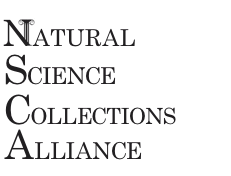The economic stimulus package, also known as the American Recovery and Reinvestment Act of 2009, has been at the forefront of the news for several weeks. Passed by Congress on 13 February, the legislation was signed into law by President Obama on 17 February 2009.  Obama signed the $787.2 billion package into law at a ceremony at the Denver Museum of Nature and Science. While at the museum, the President toured the roof-mounted solar photovoltaic system installed last summer by Namasté. The system consists of 465 solar panels that can generate 134,500 kilowatt hours of electricity per year on average–enough to power 30 homes.
As museum advocates are well aware, museums, zoos and aquaria received significant attention during the Senate’s debate on the stimulus package. Among the large number of amendments proposed in the Senate was one by Oklahoma Senator Tom Coburn (Senate Amendment No. 309), the so-called Coburn amendment. This proposal would have prohibited funds in the stimulus package from being provided to museums, zoos, aquariums, and golf courses, and for several specific activities. If included in the final law, the Coburn amendment would have prohibited museums from even competing for funds.
Concerned by the precedent the Coburn amendment would set, science and museum groups mobilized to oppose the amendment. For example, the Natural Science Collections Alliance (NSC Alliance) wrote to Senators urging them to oppose the Coburn amendment, requested that museum advocates call Congress, and requested that the House-Senate conferees and leadership work to remove the limiting language of the Coburn amendment form the final legislation. The American Institute of Biological Sciences (AIBS) issued an Action Alert asking members to contact Congress to request that members oppose the Coburn amendment and support a plan to ensure that funding for various science agencies, including the National Science Foundation, not be stripped from the final legislation.
During a remarkably quick conference between the House and the Senate, compromise legislation was adopted. The final $787 billion compromise legislation was significantly smaller than the $819 billion House bill and the $838 billion Senate bill. The compromise legislation was approved by each chamber on 13 February 2009. The House of Representatives passed it by a largely party-line vote of 246-183, with all Republicans and 7 Democrats voting against the bill. The Senate passed the measure with 60 votes, which included three Republican Senators — Olympia Snowe (ME), Susan Collins (ME), and Arlen Specter (PA).
Although the Coburn amendment was adopted by the Senate, congressional leaders listened to scientists and museum advocates and the final version of the stimulus legislation no longer prohibits museums from receiving or competing for funds provided via the stimulus. Overall, the final bill includes funding for scientific research and development. Early analysis suggests that $176 million will go to the Agricultural Research Service, $830 million to NOAA, $2.5 billion to NSF, and $140 million for the US Geological Survey. The National Institutes of Health will receive $10.4 billion.
Click here to read the letter sent to the House-Senate conferees about the Coburn amendment.
Click here to read the thank you letter sent to House-Senate conferees for removal of the prohibitive language.

